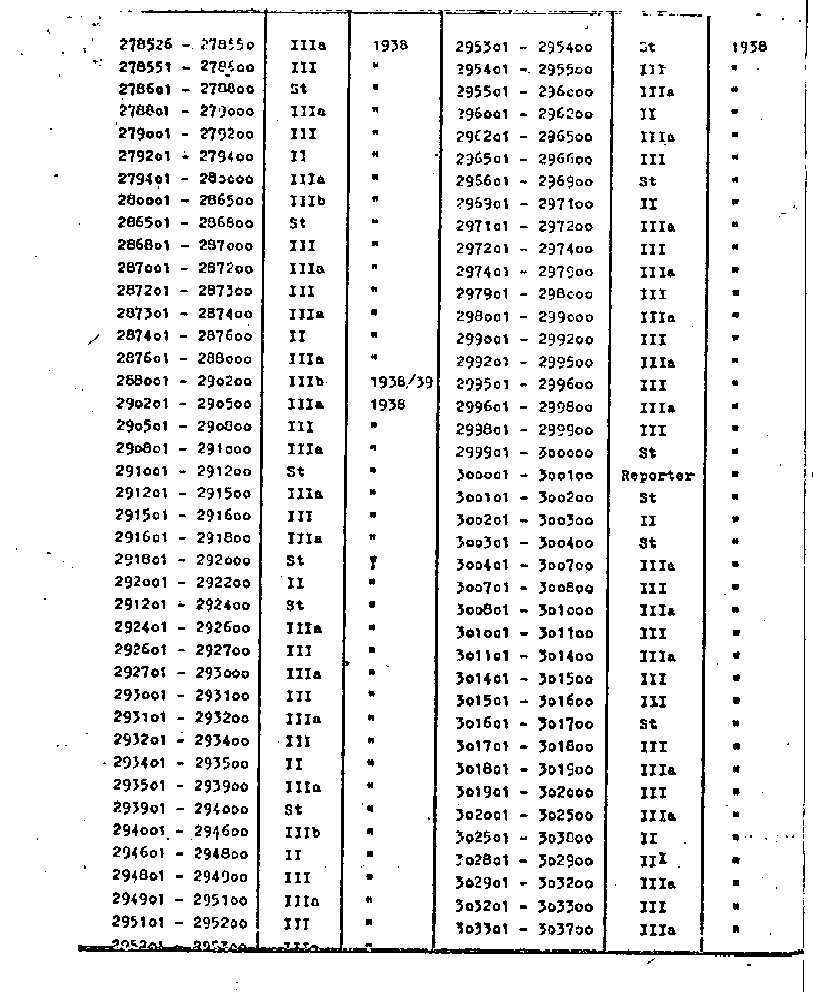

No nickle, engraved, or luxury versions were advertised, though custom work could always be had for a price. Mechanism at the rear of the Walther was not necessary on the Baby Browning because takedown is accomplished via the removeable barrel.ĭuring the first decade of its production the Baby Browning was offered only with a blued finish. The magazine safety would be jarred backward, locking the sear and preventing an accidental discharge. Prevents the magazine from being inserted if the trigger is being pulled, and FN literature claimed that if the gun were dropped
#BROWNING SERIAL NUMBERS AND PRODUCTION YEARS MANUAL#
The manual safety locks the sear, but the Walther’s safety isĮngaged when the lever is down, whereas the Baby Browning’s safety is engaged in the up position and also locks the slide.īoth guns have a magazine safety to lock the sear when the magazine is removed. side grip plate, and a cocking indicator at the rear of the frame. Like the Walther, the Baby Browning has an externalĬonnector/disconnector that runs under the right-side grip plate, a thumb-operated manual safety lever than runs under the left The Model 1906 were eliminated in order to reduce size and weight. The excellent stirrup-shaped Browning connector and the grip safety of Saive retained Browning’s method of attaching the barrel to the frame, but otherwise his design was based on the Walther Model 9, and was clearly intended to compete with it. During this time, the FN Model 1906 also continued in production.įor comparison purposes, Vanderlinden states that 1,008,000 FN Model 1906 pistols were made between 19-an average of about 45,818 pistols per year. This would be an average of only about 5,000 pistols per year. According to Vanderlinden, 50,147 Baby Brownings were completed between the beginning of production in 1931 and May of 1940 when the Germans However, production did not begin until 1931. Of the new pistol is dated April 9, 1927.” Belgian patent number 343126, for a “pistolet automatique,” was filed on 10 June 1927 in the name of Fabrique Browning and His FN Pocket Pistols,” states that: “An FN photograph of a prototype According to Anthony Vanderlinden, Browning had an agreement with FN as early as 1907 allowing them to use his name as a trademark By this time, “Browning” had become a generic term for the ammunition Personnel to call the new pistol a Browning as well. However, every previous pistol manufactured by FN had been a Browning design, and every one had been called “ le pistolet Browning,” followed by a model number based on the date of its origin, so it seemed perfectly natural to FN The fact that the new Baby was called a Browning might seem a bit surprising, since John M. The new Baby Browning was nearly a half-inch shorter than the FN Model 1906 and weighed four ounces less. However, it was the perfect name for Saive’s diminutive new pistol. The name “Baby” was a nickname that was sometimes applied to the 1906 FN Browning, which was the first 6.35mm pistol ever manufactured, but “Baby” was never an official designation for the gun. I’d be very curious to know if Saive ever had the opportunity to discuss designing a new, smaller. In regard to the origins of the Baby Browning design, Vanderlinden, in his book FN Browning Pistols: Side-Arms that Shaped World History, states: “.there is noĮvidence to indicate that FN was seeking to develop a new pocket pistol.,” and he concludes that Dieudonné Saive acted entirely on his own initiative in designing the Baby. He worked for FN until his retirement in 1954. After the war he designed the SAFN rifle, whichĮvolved into the FAL. Saive escaped to EnglandĪgain during World War II, and eventually travelled to Canada to supervise production of the Inglis-made High Power pistols. He was primarily responsible for the design of the High Power pistol, as well as for the Baby Browning. Browning’s assistant shortly before the latter’s death in 1926, and afterward Saiveīecame the head arms designer for FN. , where he worked as a machinist for Vickers. He escaped to England during the First World War Dieudonné Saive became a tool designer in the employ of Fabrique Nationale soon after he completed his education in 1906.


 0 kommentar(er)
0 kommentar(er)
